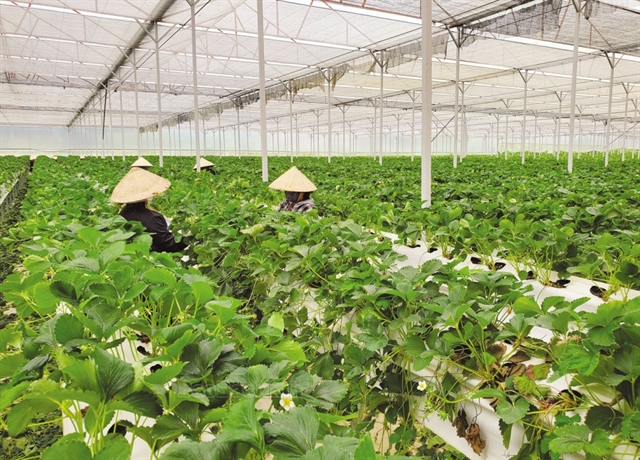The State Bank of Vietnam is aiming to make it easier to access green capital for green projects to encourage all credit institutions to participate.

Farmer workers at a green project. The central bank requires all credit institutions to participate in develop green banking and green credit. Photo thoibaonganhang.vn
The State Bank of Vietnam (SBV) is pushing all credit institutions to go green in terms of banking and credit.
They have issued a decision (Decision No 1663/QĐ-NHNN) aimed at making it easier to access green capital for green projects and the SBV requires all credit institutions to participate.
According to Nguyễn Đức Lệnh, Deputy Director of the SBV’s HCM City branch, under the decision, the requirement to develop green banking and green credit is not only the task of commercial banks but also the task of all credit institutions, including non-bank credit institutions including finance companies, financial leasing companies and people's credit funds.
“This helps to enhance responsibility and initiative of the entire credit institution system in developing green credit,” Lệnh said.
More credit institutions are already implementing environmental and social risk management in their credit granting activities and are gradually approaching international standards in this activity. Therefore, the SBV's decision is a necessary step for the entire credit institution system to join them in promoting sustainable financing activities.
According to Trần Tường Vân, Consulting Director of EY Consulting Vietnam, banks are currently ready to lend green and are eager to find suitable customers.
However, in order to expand lending, credit institutions need to be reassured about concerns about green classification criteria and capital sources for green lending.
Therefore, the decision will create a unified legal basis for credit institutions to implement in practice as it regulates the SBV to periodically update the list of green projects and set out specific responsibilities for management agencies, such as issuing guidelines on green credit and environmental risk management, issuing guidelines for preparing reports on green credit and developing reference documents for credit institutions on green credit, environmental and social risk management.
In addition, experts believe as regulations on green credit and green bonds have been supplemented and specified in the Law on Environmental Protection and Decree No. 08/2022/NĐ-CP of the Government, the SBV's regulations on support mechanisms for credit institutions to encourage the development of green banking, such as considering prioritising capital sources for green credit development through refinancing and rediscounting policies; and supporting commercial banks with a high proportion of green credit loans in accessing capital sources from international organisations and development partners, will also help credit institutions boldly deploy new products such as large-scale green credit packages and green bond issuance activities.
Dr. Cấn Văn Lực, chief economist of BIDV, said in order to have investment capital for green development sectors, Việt Nam would need to mobilise about US$368-380 billion by 2040, equivalent to $20 billion per year.
A complete legal framework would open up opportunities for the credit institution system to exploit the full potential in the green sector, especially creating initiative in diversifying capital mobilised for the green sector, investing more deeply in designing green credit products and specific green bonds. — VNS
Read original article here